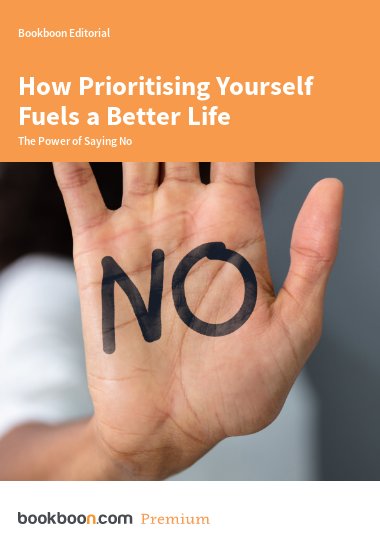“Only when you give yourself priority and charge your batteries, will you be able to give all of yourself to your loved ones, and to what you perform”, Stein Erik Egeberg writes in his e-book Your Impact and Your Self Care. Becoming You - Helping You Live the Life You.
Egeberg highlights a common struggle many adults face: doing things they don’t enjoy simply to meet others’ expectations or conform to societal norms. If you’re a natural “yes person,” you likely find yourself constantly fielding requests for help. But to avoid stress and maintain your well-being, Egeberg argues that you must learn to set boundaries—and say no when necessary—without guilt. At the heart of his message is the importance of balance: between caring for others and caring for yourself.
Step 1: Acknowledge the Need for Balance
The journey begins with accepting that you need to find a better balance between taking responsibility for yourself and others. This means taking a moment to realise that you need a surplus of energy to be able to give—on your terms, and in your time. It also means admitting to yourself that you have dreams and wishes that remain unfulfilled.
Step 2: Communicate with Those Around You
A second step is talking to your closest family, friends, and the people you work with. Tell them why you sometimes need to say no and get acceptance that this is okay. Ask them directly what they think about you as a parent, daughter/son, sister/brother, friend, or colleague. The positive answers you’ll receive will lend strength to the concept that you have to give higher priority to yourself.
Step 3: Take Action with the “Thoughts–Action–Learning” Plan
Then comes the hardest step: starting the practical process of making changes. For this, Egeberg suggests using the “Thoughts-Action- Learning” plan:
Imagine the consequences of an upcoming, planned action. What consequences will it have for me and for those who are affected?” Note that being passive or refusing a request is also an action.
Go through with the action the way I planned.
Reflect on the outcome of your action, and the consequences:
Was the result as expected?
Were personal relationships affected and changed?
Be extra aware, and pay close attention when the action is passive, or entails a refusal to a request.
Make use of the experience when considering the next relevant action. Think of what you learned from it, for example:“When the experience is positive, I gain additional confidence.”
Enforce the next action and repeat the process with greater awareness.
Follow these steps and see how your practical and mental life will be affected from you saying yes, and from you saying no. With increased awareness of the consequences, Egeberg writes, you will feel more confident in prioritising yourself, thus being more comfortable saying no, enabling well-balanced interactions with others.
Want to explore Egeberg’s insights further? Click here to read his book.


